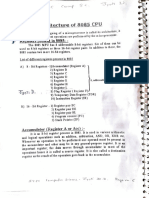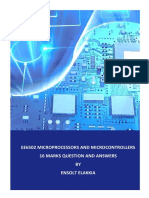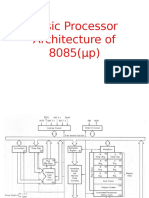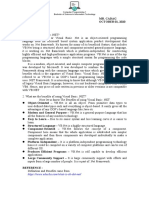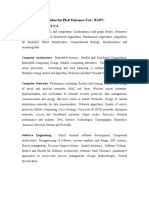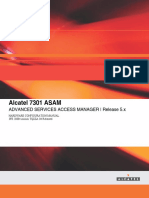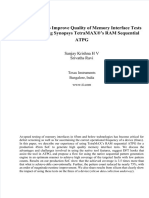0% found this document useful (0 votes)
86 views27 pagesUnit 1 Intro To 8 Bit Microprocessor
The document discusses the architecture of an 8-bit microprocessor. It describes the main components including the Arithmetic Logic Unit (ALU) which performs operations on data. It has registers like the accumulator, program counter, stack pointer and flag register that are used to store data and instructions temporarily. The flag register in particular stores status flags set by the ALU after operations. General purpose registers can also store data and address memory locations.
Uploaded by
gayathriCopyright
© © All Rights Reserved
We take content rights seriously. If you suspect this is your content, claim it here.
Available Formats
Download as PPTX, PDF, TXT or read online on Scribd
0% found this document useful (0 votes)
86 views27 pagesUnit 1 Intro To 8 Bit Microprocessor
The document discusses the architecture of an 8-bit microprocessor. It describes the main components including the Arithmetic Logic Unit (ALU) which performs operations on data. It has registers like the accumulator, program counter, stack pointer and flag register that are used to store data and instructions temporarily. The flag register in particular stores status flags set by the ALU after operations. General purpose registers can also store data and address memory locations.
Uploaded by
gayathriCopyright
© © All Rights Reserved
We take content rights seriously. If you suspect this is your content, claim it here.
Available Formats
Download as PPTX, PDF, TXT or read online on Scribd
/ 27



